(By Khalid Masood)
In the rapidly advancing field of military artillery, multiple launch rocket systems (MLRS) represent crucial assets for delivering concentrated firepower over large areas. These systems provide armed forces with the ability to saturate targets with rockets, offering both tactical and psychological advantages. Moreover, they incorporate guided munitions, extended ranges, and mobile platforms to adapt to modern battlefields. As we review 2025, the top 10 MLR of the world highlight innovations in accuracy, mobility, and lethality. For instance, many feature precision-guided rockets and quick reload mechanisms for enhanced effectiveness. Additionally, countries prioritise systems that balance cost with operational versatility. However, some face challenges from counter-battery fire and logistical demands. The article addresses queries like “what are the best MLR systems in 2025?” or “which MLR do major countries deploy?” Sourcing from defence reports and expert analyses, we provide detailed insights. Therefore, readers can understand these powerful weapons.
MLRS typically launch multiple rockets in salvos to overwhelm defences. They operate on wheeled or tracked chassis for rapid deployment. Additionally, guidance technologies like GPS improve hit rates. According to data, over 10,000 MLRS launchers serve worldwide, with Russia leading in quantity. Meanwhile, the United States excels in precision variants, and China focuses on indigenous designs. However, nations like India develop cost-effective systems for regional needs. Consequently, the top 10 MLR of the world reflect diverse strategies. Armed forces in Europe, Asia, and the Americas utilise them for exercises and conflicts. For example, joint operations demonstrate their interoperability. Overall, these systems shape artillery tactics. As conflicts evolve, upgrades ensure sustained impact. Thus, this list spotlights leading models in 2025.
MLRS have progressed from World War II Katyushas to today’s guided platforms. They prioritise salvo fire for area saturation. Additionally, materials like composites enhance durability. Reports show the MLRS market exceeds £15 billion annually. The M270 dominates Western forces, while the Smerch leads in Russia. However, newer systems like the Pinaka push boundaries with extended ranges. Consequently, innovation drives military adoption. Forces use them for counter-battery and support roles. For instance, in urban warfare, they provide indirect fire. Overall, these weapons are indispensable. As 2025 brings drone integrations, electronic enhancements become vital. Thus, the top 10 MLR of the world embody artillery evolution.
1. M270 MLRS: Leading the Top 10 MLR of the World
The M270 MLRS originated in the 1970s as the General Support Rocket System. The US Army sought a mobile rocket launcher to counter Soviet artillery. Moreover, development began with Vought Corporation in 1980. The first units delivered in 1983. Additionally, it entered service with NATO allies in the 1980s. The system saw action in the 1991 Gulf War. However, upgrades to M270A1 in 2000 improved fire control. This led to M270A2 variants in 2022 with new cab designs. Furthermore, it features tracked mobility for terrain versatility. Overall, it represents Western artillery excellence.
Specifications include 227 mm calibre rockets. The range reaches 80 km with GMLRS. Moreover, it launches 12 rockets in salvos. The chassis uses a Bradley-based tracked vehicle. Weight is 25 tonnes. Additionally, speed is 64 km/h on roads. The crew consists of three members. Reload time is 10 minutes. Furthermore, it supports ATACMS missiles to 300 km. Overall, it offers precision and volume.
Operators include the United States with over 840 launchers. The United Kingdom has 44 M270B1 units. Moreover, Italy operates 22 MLRS-I variants. South Korea deploys 58 with ATACMS. Greece has 36 for defence. Additionally, France uses 13 LRU versions. The system equips over 15 countries in 2025. However, some upgrade to M270A2. Overall, it serves NATO forces.
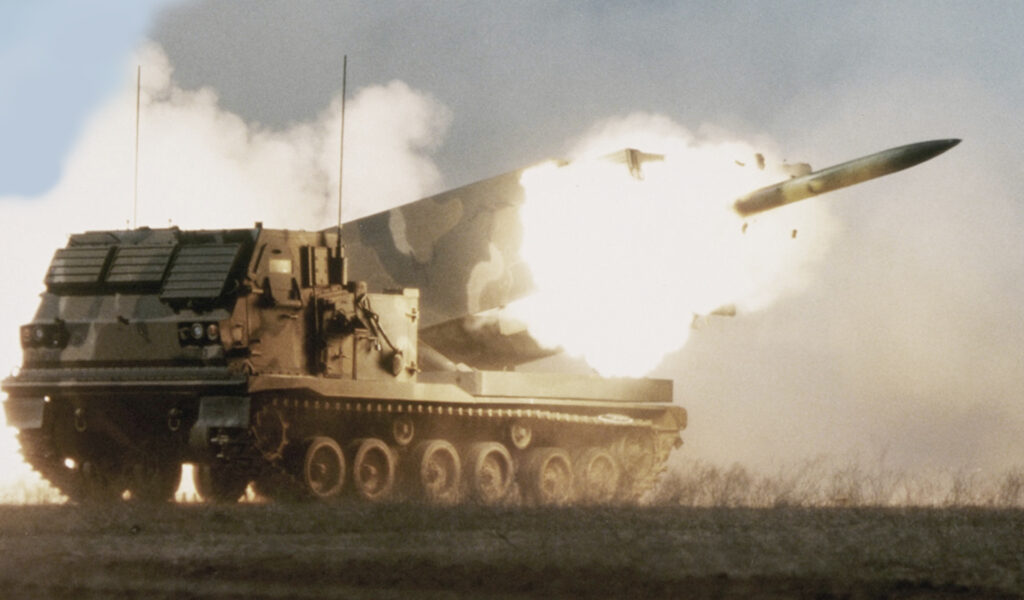
Pros feature high mobility for quick repositioning. It launches guided rockets accurately. Moreover, the system integrates with command networks. The tracked chassis handles rough terrain. Additionally, salvo fire overwhelms targets. This reduces counter threats. Furthermore, upgrades extend life to 2050. Overall, it excels in combined arms.
Cons involve high cost of £1.8 million per launcher. The heavy weight limits air transport. Moreover, reload requires support vehicles. Vulnerability to drones persists. Additionally, crew training is intensive. This affects readiness. However, pros outweigh cons in operations. Overall, it demands logistics.
The system has seen notable use in several major conflicts. During the 1991 Gulf War, it was employed to suppress Iraqi forces and neutralize artillery positions. In the 2003 invasion of Iraq, it again played a key role in targeting defensive strongholds and supporting ground advances. More recently, in 2022, it provided critical firepower to Ukraine in its fight against Russia, though some launchers were damaged—highlighting the risks involved in high-intensity warfare. NATO exercises have further demonstrated the system’s capabilities, underscoring its lasting impact on modern battlefields.
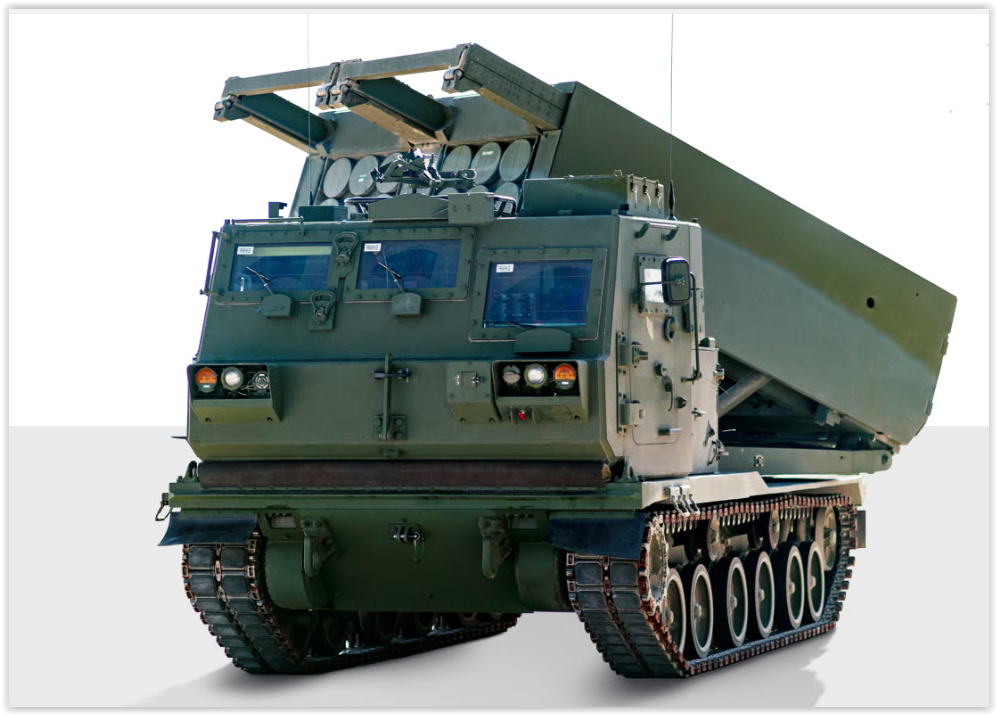
2. M142 HIMARS: Mobile in the Top 10 MLR of the World
The M142 HIMARS developed in the 1990s as a lighter M270 variant. The US Army needed a wheeled system for rapid deployment. Moreover, Lockheed Martin led the project. The first prototype tested in 1998. Additionally, it entered service in 2005. The HIMARS saw action in Afghanistan in 2003. However, Ukraine use in 2022 boosted fame. This led to expanded production. Furthermore, it features truck mobility. Overall, it represents American precision.
Specifications include 227 mm calibre rockets. The range reaches 80 km with GMLRS. Moreover, it launches 6 rockets in salvos. The chassis uses an FMTV truck. Weight is 16 tonnes. Additionally, speed is 85 km/h on roads. The crew consists of three members. Reload time is 5 minutes. Furthermore, it supports ATACMS to 300 km. Overall, it offers agility.
Operators include the United States with over 500 launchers. Ukraine has 55 for defence. Moreover, Romania operates 54. Australia deploys 20. Poland has 20 with upgrades. Additionally, Estonia uses 6. The system equips over 10 countries in 2025. However, deliveries continue. Overall, it serves Western allies.
Pros feature C-130 transportability for rapid deployment. It launches guided munitions accurately. Moreover, the wheeled chassis enhances mobility. The system integrates with networks. Additionally, a small crew reduces manpower. This lowers costs. Furthermore, Ukraine success proves lethality. Overall, it excels in hit-and-run.
Cons involve a limited salvo of 6 rockets. The lighter armour is vulnerable to fire. Moreover, reload requires support. Vulnerability to drones persists. Additionally, high missile cost of £130,000. This affects budgets. However, pros make it valuable. Overall, it demands protection.
Notable uses include its deployment in Afghanistan in 2007, where it provided vital support against the Taliban. In the 2022 Ukraine war, it played a key role in destroying Russian assets and aiding counteroffensives. Additionally, it supported Iraqi forces in their fight against ISIS, delivering effective firepower. However, some units were damaged in strikes, highlighting operational risks. Even so, military exercises continue to demonstrate its potential, underscoring its ability to influence the course of battles.
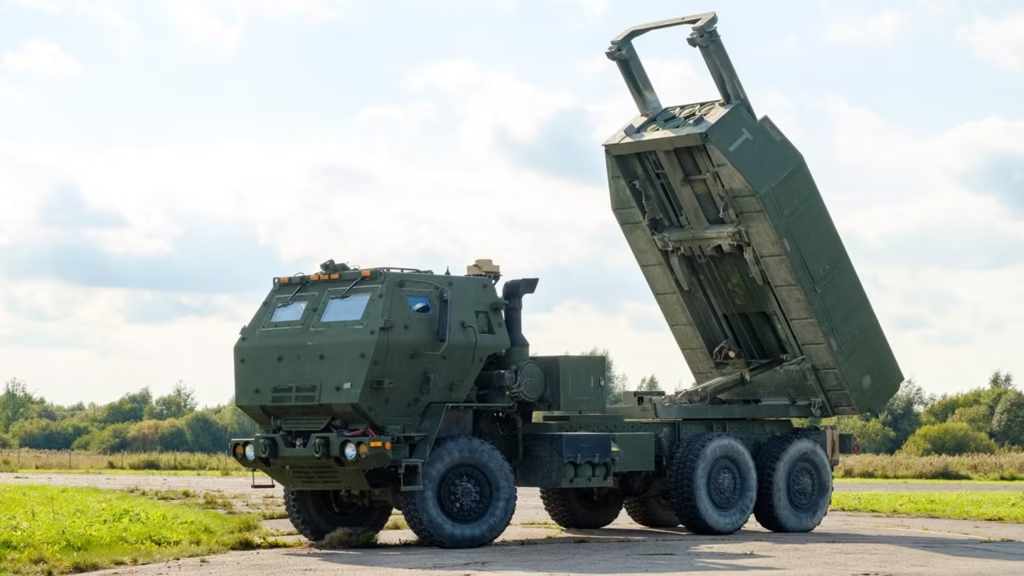
3. BM-30 Smerch: Powerful in the Top 10 MLR of the World
The BM-30 Smerch originated in the 1970s as a heavy MLRS. The Soviet Union needed long-range artillery. Moreover, Splav developed it. The first test occurred in 1983. Additionally, it entered service in 1989. The Smerch saw action in Syria in 2015. However, Ukraine use in 2022 showcased it. This led to upgrades. Furthermore, it features 300 mm calibre. Overall, it embodies Russian firepower.
Specifications include 300 mm calibre rockets. The range reaches 90 km. Moreover, it launches 12 rockets in salvos. The chassis uses a MAZ-543M truck. Weight is 43 tonnes. Additionally, speed is 60 km/h on roads. The crew consists of four members. Reload time is 36 minutes. Furthermore, it supports cluster munitions. Overall, it offers saturation.
Operators include Russia with 100 launchers. Ukraine has 94 for defence. Moreover, India operates 38. Algeria deploys 50. Azerbaijan uses 30. Additionally, Belarus has 36. The system equips over 15 countries in 2025. However, sanctions affect Russia. Overall, it serves Eastern nations.
Pros feature long range for stand-off strikes. It saturates areas with rockets. Moreover, the system uses guided variants accurately. The truck chassis provides mobility. Additionally, cluster options overwhelm. This favours offence. Furthermore, Syria success proves. Overall, it excels in volume fire.
Cons involve long reload time. The heavy weight limits off-road. Moreover, vulnerability to counter-battery. High cost per salvo. Additionally, crew training is intensive. This affects readiness. However, upgrades reduce times. Overall, it demands cover.
Notable uses include the 2015 Syria conflict, where the system was employed to support operations and target rebel strongholds. It was also used extensively in the 2022 Ukraine war, destroying fortified positions and aiding advances. Earlier, in Chechnya, it provided crucial fire support during assaults. However, its losses in Ukraine highlighted serious vulnerabilities, exposing the risks of modern warfare. Even so, military exercises continue to demonstrate its potential, confirming its relevance and impact on contemporary conflicts.
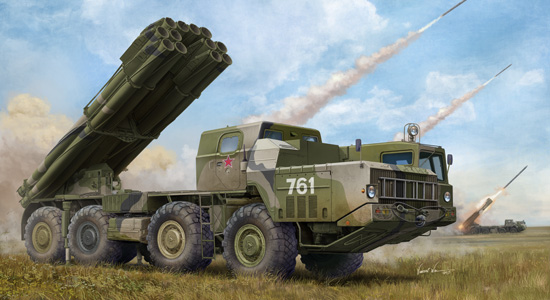
4. TOS-1 Buratino: Thermobaric in the Top 10 MLR of the World
The TOS-1 Buratino originated in the 1980s as a flamethrower system. The Soviet Union needed short-range heavy fire. Moreover, Omsk Transmash developed it. The first test occurred in 1988. Additionally, it entered service in 1995. The Buratino saw action in Chechnya in 1999. However, Ukraine use in 2022 increased visibility. This led to TOS-1A variants. Furthermore, it features a tank chassis. Overall, it embodies Russian close support.
Specifications include 220 mm calibre rockets. The range reaches 6 km. Moreover, it launches 24 rockets in salvos. The chassis uses a T-72 tank. Weight is 46 tonnes. Additionally, speed is 60 km/h on roads. The crew consists of three members. Reload time is 90 minutes. Furthermore, it uses thermobaric warheads. Overall, it offers devastation.
Operators include Russia with 20 launchers. Azerbaijan has 18 for defence. Moreover, Kazakhstan operates 3. Syria uses 10 for war. Armenia has 1. Additionally, Iraq deploys 4. The system equips 10 countries in 2025. However, limited numbers. Overall, it serves allies.
Pros feature thermobaric rockets for bunkers. It destroys fortified positions. Moreover, the tank chassis provides armour. The system launches salvos quickly. Additionally, short range suits close support. This favours infantry. Furthermore, Ukraine use proves lethality. Overall, it excels in urban.
Cons involve short range limiting use. The heavy weight slows mobility. Moreover, vulnerability to artillery. High fuel consumption. Additionally, crew exposed during reload. This risks attacks. However, pros make it unique. Overall, it demands escort.
Notable uses include the 1999 Chechnya War, where the system was employed in assault operations to clear rebel positions. It was later used in the 2015 Syria conflict, effectively targeting militant groups and supporting ground advances. Additionally, it saw action in Afghanistan, providing crucial fire support. However, its losses in Ukraine highlighted significant vulnerabilities, exposing the risks of modern battlefield conditions. Even so, military exercises continue to demonstrate its potential, confirming its impact in close-combat engagements.
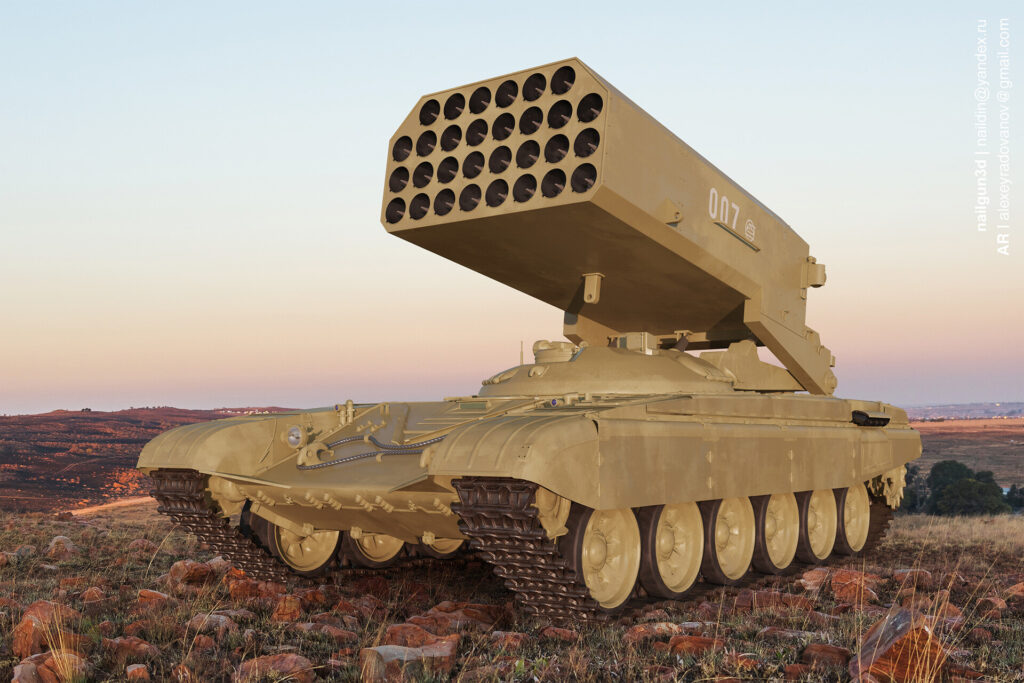
5. PHL-03: Chinese in the Top 10 MLR of the World
The PHL-03 originated in the 1990s as a Smerch copy. China needed long-range MLRS. Moreover, NORINCO developed it. The first test occurred in 2004. Additionally, it entered service in 2005. The PHL-03 saw deployment in border areas. However, upgrades in 2025 improved guidance. This led to exports. Furthermore, it features a truck chassis. Overall, it represents Chinese adaptation.
Specifications include 300 mm calibre rockets. The range reaches 150 km. Moreover, it launches 12 rockets in salvos. The chassis uses a WS-2400 truck. Weight is 43 tonnes. Additionally, speed is 60 km/h on roads. The crew consists of four members. Reload time is 38 minutes. Furthermore, it supports cluster munitions. Overall, it offers range.
Operators include China with over 300 launchers. Morocco has 36 for defence. Moreover, Cambodia operates 6. Tanzania uses 6 for security. Additionally, Ethiopia deploys. The system equips 5 countries in 2025. However, mainly Chinese. Overall, it serves Asia.
Pros feature long range for stand-off. It saturates with precision. Moreover, the system uses guided rockets. The truck chassis provides mobility. Additionally, low cost for production. This favours mass. Furthermore, exercises prove. Overall, it excels in volume.
Cons involve copy design limiting originality. The heavy weight limits off-road. Moreover, vulnerability to counter. High ammo cost. Additionally, crew training needed. This affects. However, pros make valuable. Overall, it demands logistics.
Notable uses of the system include its deployment during the 2020 border patrols, where it served as an effective deterrent. It was also featured in PLA exercises, conducting simulated strikes with precision. Additionally, Morocco successfully employed the system, showcasing its adaptability across different forces. However, its lack of involvement in major wars limits its combat record. Even so, repeated PLA drills continue to demonstrate its capabilities, underscoring its role in operational preparedness.
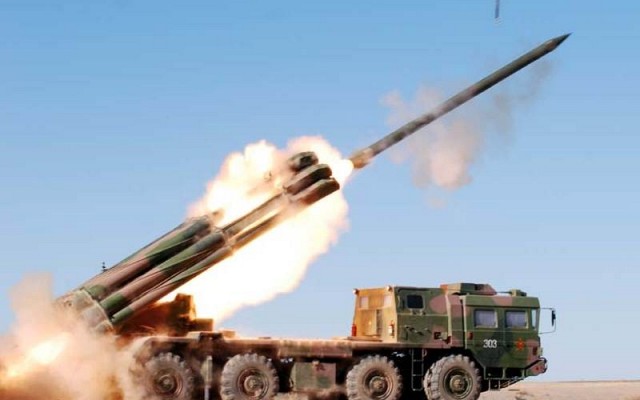
6. Pinaka: Indian in the Top 10 MLR of the World
The Pinaka originated in the 1980s as a BM-21 replacement. India needed indigenous MLRS. Moreover, DRDO developed it. The first test occurred in 1995. Additionally, it entered service in 2000. The Pinaka saw action in Kargil 1999. However, Mk-II in 2016 extended range. This led to Mk-III in 2025. Furthermore, it features a truck chassis. Overall, it represents Indian self-reliance.
Specifications include 214 mm calibre for Mk-I, 214 mm for Mk-II. The range reaches 38 km for Mk-I, 90 km for Mk-II. Moreover, it launches 12 rockets in salvos. The chassis uses a Tatra truck. Weight is 18 tonnes. Additionally, speed is 80 km/h on roads. The crew consists of six members. Reload time is 15 minutes. Furthermore, it supports guided munitions. Overall, it offers accuracy.
Operators include India with 100 launchers. Armenia has 4 for defence. Moreover, no other in 2025. The system equips army regiments. However, exports planned. Overall, it serves India.
Pros feature indigenous production for cost. It launches guided for precision. Moreover, the system uses modular rockets. The truck chassis provides mobility. Additionally, short reload favours fire. This supports infantry. Furthermore, Kargil success proves. Overall, it excels in mountains.
Cons involve short range for Mk-I. The weight limits off-road. Moreover, vulnerability to counter. High development cost. Additionally, crew large. This affects manpower. However, Mk-III improves. Overall, it demands expansion.
Notable uses of the system include its deployment during the 1999 Kargil War, where it was employed for artillery strikes against Kashmiri mujahideen positions. It was again utilized during the 2020 Ladakh standoff, serving as an effective deterrent and providing crucial fire support. The system has also been tested successfully in various military exercises, demonstrating adaptability to diverse operational needs. However, no major combat employment has been reported since then, which somewhat limits its combat record. Overall, it continues to play an important role in strengthening border defences.
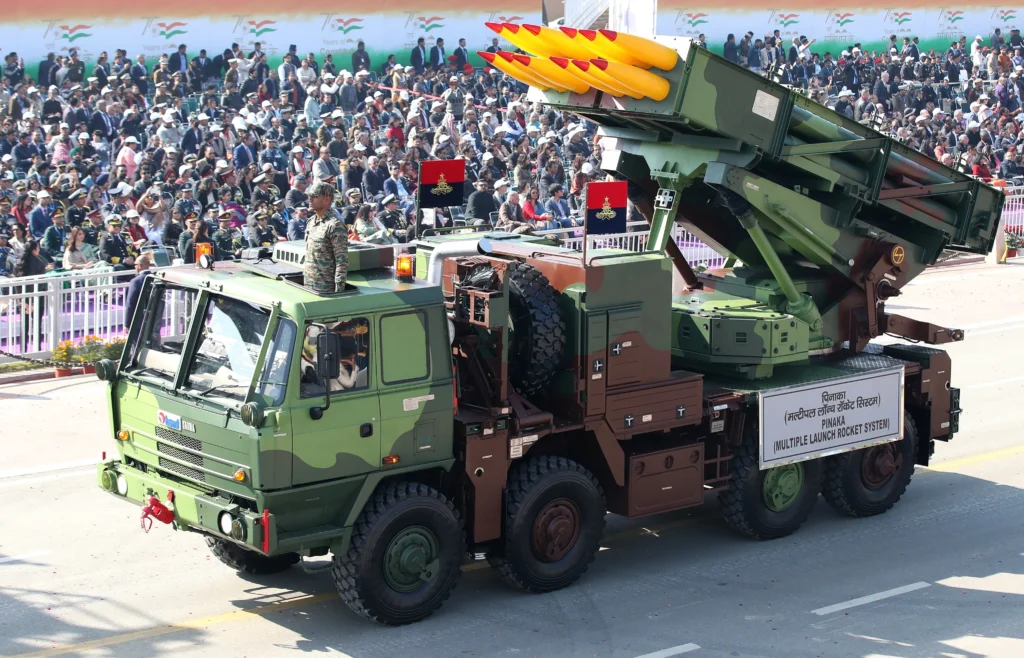
7. Astros II: Brazilian in the Top 10 MLR of the World
The Astros II originated in the 1980s as a modular MLRS. Brazil needed versatile artillery. Moreover, Avibras developed it. The first test occurred in 1983. Additionally, it entered service in 1983. The Astros saw action in Gulf War 1991 with Saudi. However, upgrades to Mk6 in 2014 improved. This led to exports. Furthermore, it features a truck chassis. Overall, it represents Latin innovation.
Specifications include 127 to 300 mm calibre rockets. The range reaches 90 km. Moreover, it launches 32 to 4 rockets depending on calibre. The chassis uses a Tectran truck. Weight is 24 tonnes. Additionally, speed is 90 km/h on roads. The crew consists of three members. Reload time is 15 minutes. Furthermore, it supports guided munitions. Overall, it offers modularity.
Operators include Brazil with 60 launchers. Saudi Arabia has 60 for defence. Moreover, Malaysia operates 36. Indonesia deploys 36. Qatar uses 24. Additionally, Iraq has 10. The system equips 10 countries in 2025. However, some upgrade. Overall, it serves South America and Middle East.
Pros feature modular calibers for missions. It adapts to needs. Moreover, the system uses GPS for accuracy. The truck chassis provides mobility. Additionally, low cost for production. This favours exports. Furthermore, Gulf War success proves. Overall, it excels in flexibility.
Cons involve reload time. The weight limits off-road in mud. Moreover, vulnerability to air. High ammo variety complicates. Additionally, crew training needed. This affects. However, Mk6 improves. Overall, it demands planning.
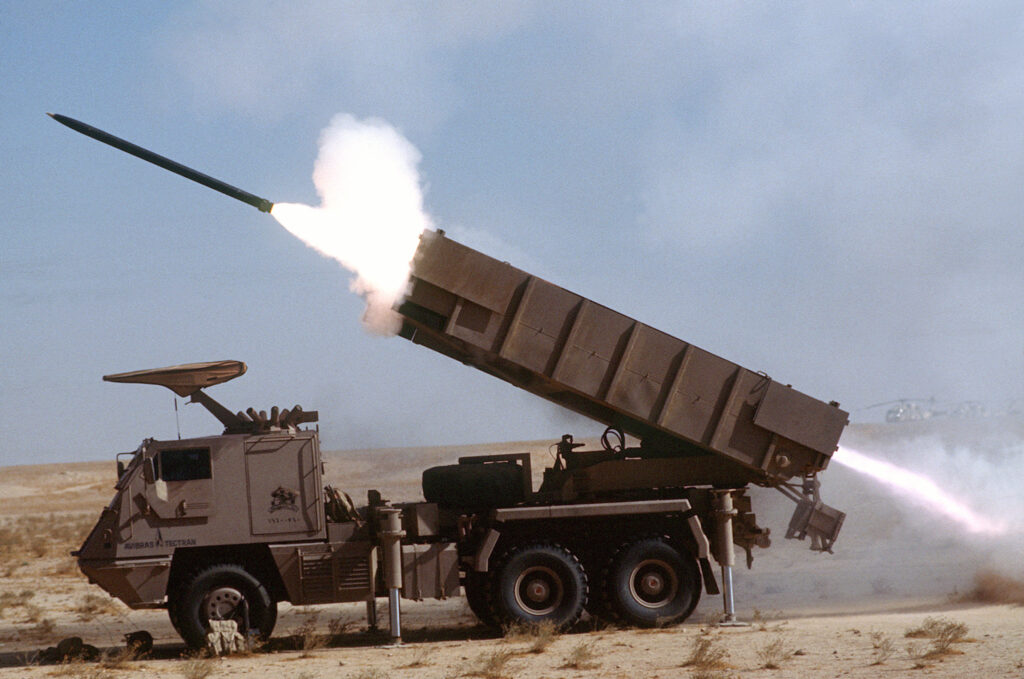
8. RM-70: Czech in the Top 10 MLR of the World
The RM-70 originated in the 1970s as a Grad upgrade. Czechoslovakia needed better mobility. Moreover, Excalibur Army developed it. The first test occurred in 1971. Additionally, it entered service in 1972. The RM-70 saw action in Afghanistan with Soviets. However, Vampire variant in 2015 improved. This led to exports to Ukraine. Furthermore, it features a truck chassis. Overall, it represents Eastern Europe.
Specifications include 122 mm calibre rockets. The range reaches 20 km. Moreover, it launches 40 rockets in salvos. The chassis uses a Tatra truck. Weight is 33 tonnes. Additionally, speed is 85 km/h on roads. The crew consists of four members. Reload time is 2 minutes with spare rack. Furthermore, it supports HE fragments. Overall, it offers speed.
Operators include Czech Republic with 60 launchers. Ukraine has 40 for defence. Moreover, Slovakia operates 26. Georgia uses 6. Angola deploys. Additionally, Poland has. The system equips 15 countries in 2025. However, some modernise. Overall, it serves Europe and Africa.
Pros feature quick reload with spare. It fires again fast. Moreover, the system uses armour cab for protection. The truck chassis provides mobility. Additionally, low cost for maintenance. This favours users. Furthermore, Ukraine success proves. Overall, it excels in sustained fire.
Cons involve short range. The weight limits off-road. Moreover, vulnerability to counter. High crew exposure. Additionally, older rockets less accurate. This affects. However, Vampire upgrades. Overall, it demands cover.

9. Fajr-5: Iranian in the Top 10 MLR of the World
The Fajr-5 originated in the 1990s as a long-range MLRS. Iran needed heavy fire support. Moreover, Aerospace Industries Organisation developed it. The first test occurred in 1997. Additionally, it entered service in 1997. The Fajr-5 saw action in Syria in 2012. However, upgrades in 2025 improved guidance. This led to deployments. Furthermore, it features a truck chassis. Overall, it represents Iranian ingenuity.
Specifications include 333 mm calibre rockets. The range reaches 75 km. Moreover, it launches 4 rockets in salvos. The chassis uses a Mercedes truck. Weight is 15 tonnes. Additionally, speed is 65 km/h on roads. The crew consists of three members. Reload time is 8 minutes. Furthermore, it supports HE warheads. Overall, it offers reach.
Operators include Iran with unknown launchers. Syria has for war. Moreover, Hamas uses in Gaza. Venezuela interested. Additionally, Hezbollah deploys. The system equips 5 groups in 2025. However, mainly Iranian. Overall, it serves Middle East.
Pros feature long range for stand-off. It saturates with HE. Moreover, the system uses mobile launcher. The truck chassis provides mobility. Additionally, low cost for production. This favours allies. Furthermore, Gaza use proves. Overall, it excels in asymmetric.
Cons involve inaccurate unguided. The weight limits off-road. Moreover, vulnerability to air. High reload time. Additionally, crew training needed. This affects. However, guided versions improve. Overall, it demands precision.
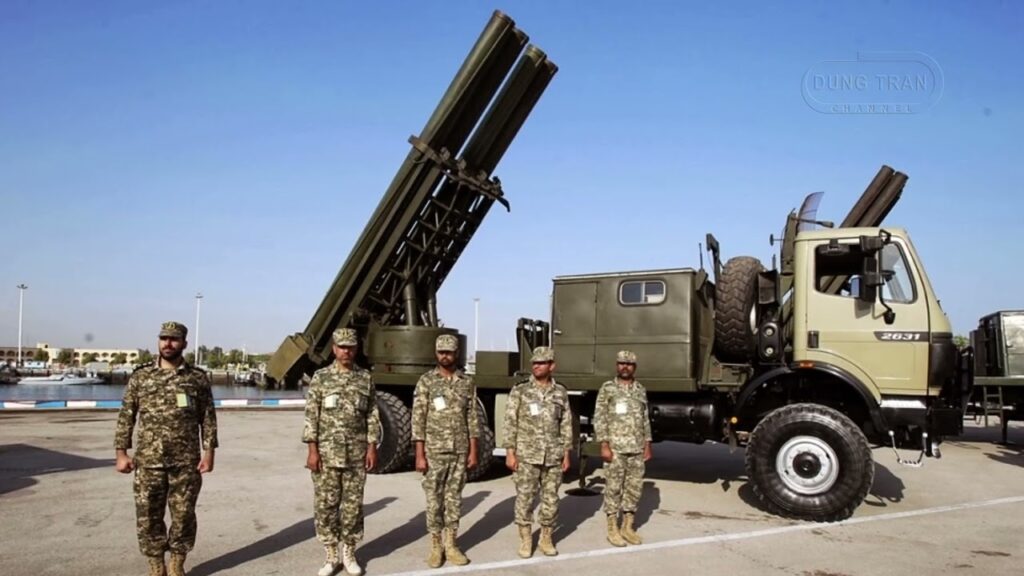
10. LAR-160: Israeli in the Top 10 MLR of the World
The LAR-160 originated in the 1970s as a light MLRS. Israel needed mobile artillery. Moreover, Israel Military Industries developed it. The first test occurred in 1981. Additionally, it entered service in 1983. The LAR-160 saw action in Lebanon in 1982. However, upgrades in 2025 improved rockets. This led to exports. Furthermore, it features a modular design. Overall, it represents Israeli flexibility.
Specifications include 160 mm calibre rockets. The range reaches 45 km. Moreover, it launches 18 to 26 rockets in salvos. The chassis uses various trucks or tanks. Weight varies by carrier. Additionally, speed depends on vehicle. The crew consists of four members. Reload time is 5 minutes. Furthermore, it supports cluster munitions. Overall, it offers compactness.
Operators include Israel with unknown launchers. Argentina has 20 for defence. Moreover, Georgia uses 20. Romania operates 20. Azerbaijan deploys 30. Additionally, Venezuela has 20. The system equips 8 countries in 2025. However, some modernise. Overall, it serves Latin and Caucasus.
Pros feature modular pods for quick change. It adapts to carriers. Moreover, the system uses guided for accuracy. The light weight provides mobility. Additionally, low cost for rockets. This favours users. Furthermore, Lebanon success proves. Overall, it excels in flexibility.
Cons involve short range. The pods limit salvo size. Moreover, vulnerability to counter. High dependence on carrier. Additionally, crew training needed. This affects. However, upgrades extend range. Overall, it demands integration.
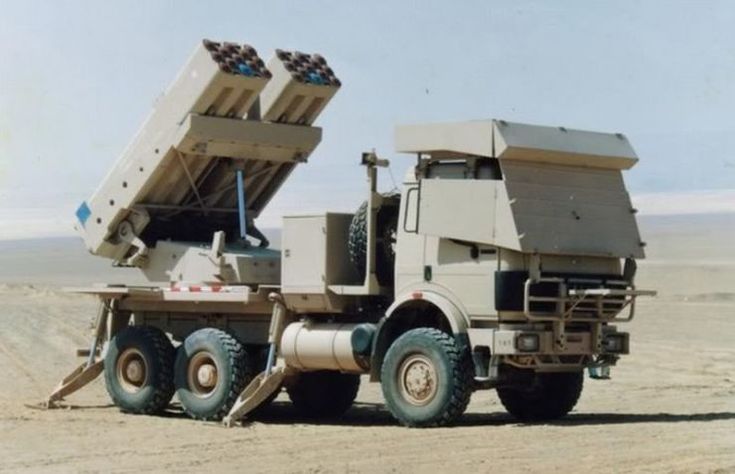
Special Mention: Al-Fateh MLRS of Pakistan
The Al-Fateh MLRS, a Pakistani-engineered guided multiple launch rocket system, has emerged as a notable contender in modern artillery due to its impactful performance in the May 2025 India-Pakistan conflict. Development began in the 2010s under the Ministry of Defence Production, aiming to reduce reliance on foreign arms and enhance precision strike capabilities. Moreover, Global Industrial Defence Solutions led the project, with the first test of Fatah-I in 2021, followed by Fatah-II in 2023. The Al-Fateh variant, an advanced iteration, incorporates cutting-edge guidance systems and extended range, achieving significant success against Indian forces. Additionally, it uses a Chinese Taian TAS5450 eight-wheel drive chassis for mobility. Overall, it represents Pakistan’s push for self-reliance in defence technology.
Specifications include 300 mm calibre rockets for Fatah-II. The range reaches 400 km for Fatah-II, potentially higher for Al-Fateh. Moreover, it launches multiple rockets in salvos, though exact numbers are undisclosed. The chassis ensures high mobility, with a speed of approximately 60 km/h. The crew consists of four members. Reload time is estimated at 15-20 minutes. Furthermore, it features advanced inertial and satellite navigation, with a circular error probable under 10 metres. Overall, it offers precision and long-range capability.
Operators include Pakistan, with an unknown number of launchers in 2025. No confirmed exports exist, though interest from allies is reported. Moreover, the system equips Pakistan’s Army Rocket Force Command, established in 2025 to counter Indian advances. The Al-Fateh supports strategic operations. Additionally, its integration with Chinese technology enhances targeting. However, its use is primarily regional. Overall, it serves Pakistan’s defence needs.
Pros feature exceptional range for deep strikes, as demonstrated in May 2025, where Al-Fateh rockets targeted Indian military bases, causing significant disruption. It offers high precision with guided munitions. Moreover, the mobile chassis ensures rapid repositioning. The system integrates with command networks for real-time targeting. Additionally, indigenous development reduces costs. This supports mass production. Furthermore, its success against Indian forces proves lethality. Overall, it excels in asymmetric warfare.
Cons involve limited global adoption, restricting its ranking among top systems. The system’s complexity requires extensive crew training. Moreover, vulnerability to advanced air defences, as seen in Indian interceptions, poses risks. High ammunition costs may limit salvo frequency. Additionally, reliance on Chinese components could affect supply chains. However, ongoing upgrades address issues. Overall, it demands broader testing.
Notable uses include the May 2025 India-Pakistan conflict, where Al-Fateh rockets targeted Indian airbases from Awantipora in the north to Bhuj in the south, achieving devastating effects on IAF operations, logistics and morale. Moreover, Operation Bunyan-um-Marsus showcased its ability to counter Indian advances, though some rockets were intercepted. The system supported rapid strikes. Additionally, exercises in 2024 demonstrated potential. Furthermore, its role in deterring aggression underscores its strategic value. Overall, Al-Fateh marks a significant achievement for Pakistan.
Conclusion: Summarising the Top 10 MLR of the World
From the M270 MLRS to the LAR-160, the world’s top multiple launch rocket systems (MLRS) showcase the steady evolution of modern artillery. The inclusion of Pakistan’s Al-Fateh highlights its growing capabilities in this field. By 2025, systems such as the HIMARS stand out for their mobility, while the Smerch remains unmatched in range. Increasingly, MLRS are adapting to precision warfare through the integration of guided rockets, though challenges such as lengthy reload times continue to pose limitations. Studying the top ten MLRS provides valuable insight into global trends: as warfare evolves, innovations in guidance technology, drone integration, and AI-driven targeting are expected to reshape the future of fire support. With expanding exports and widespread adoption, MLRS remain an indispensable asset for modern armed forces.


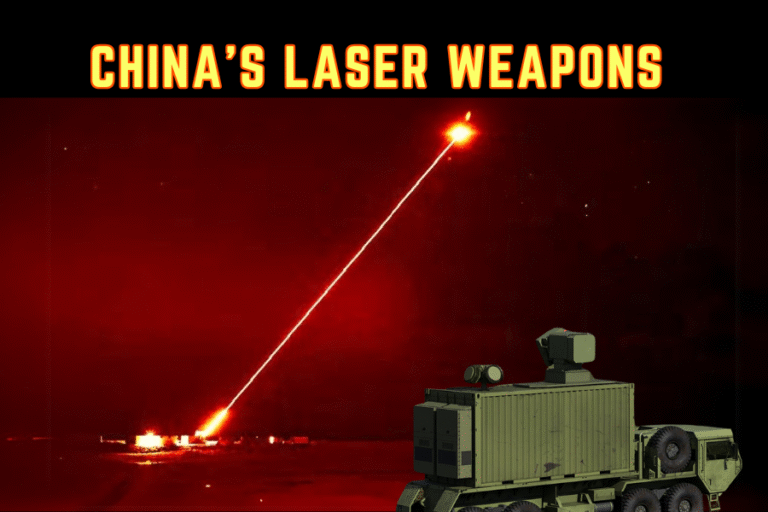
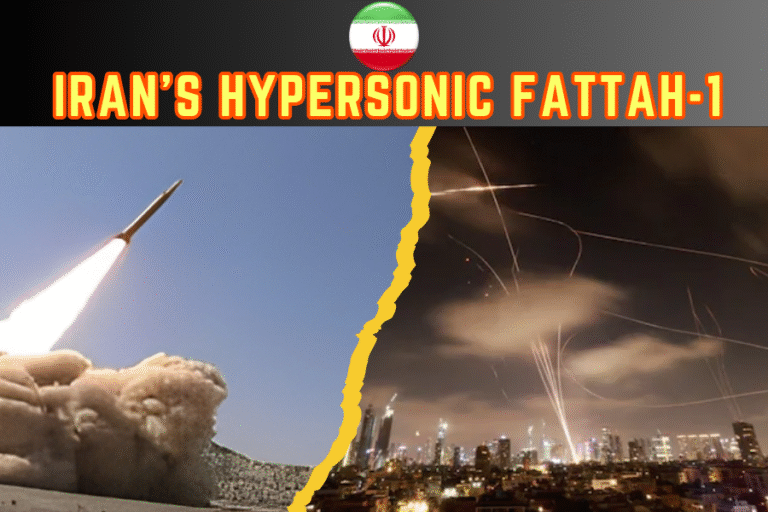
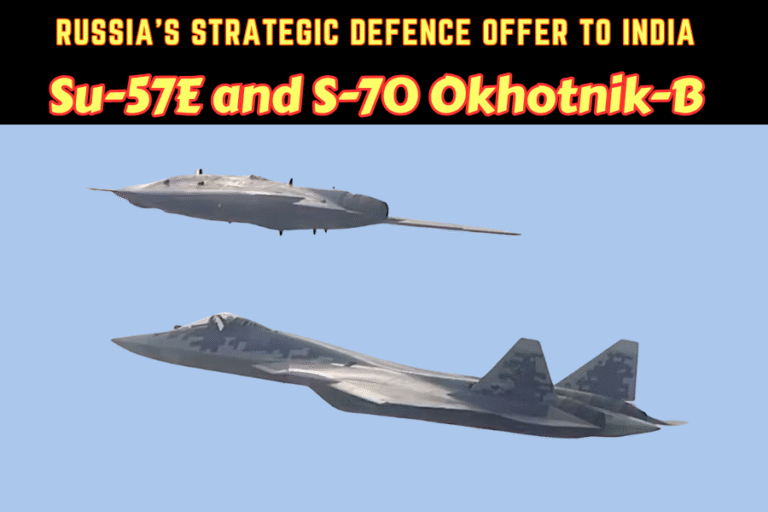

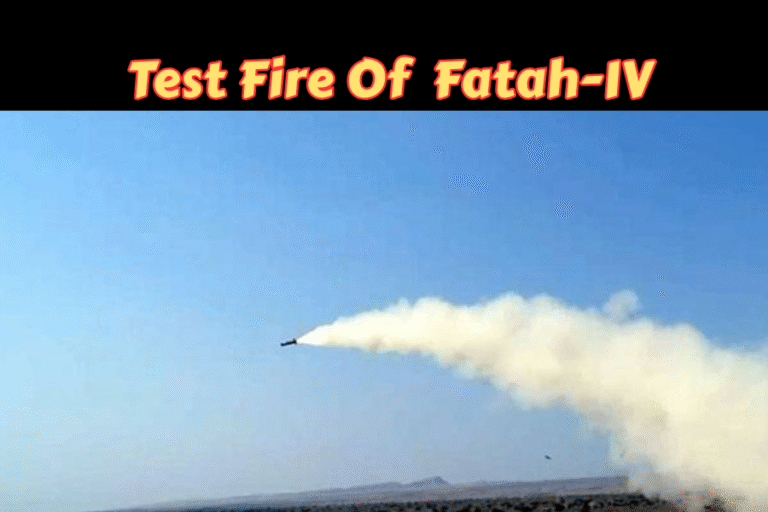

I adore reading through and I conceive this website got some really useful stuff on it! .
You can certainly see your skills in the work you write. The arena hopes for even more passionate writers such as you who aren’t afraid to mention how they believe. All the time go after your heart.